We need your consent to use the individual data so that you can see information about your interests, among other things. Click "OK" to give your consent.
ASTM D6699-01(2010)
Standard Practice for Sampling Liquids Using Bailers
STANDARD published on 1.12.2010
The information about the standard:
Designation standards: ASTM D6699-01(2010)
Note: WITHDRAWN
Publication date standards: 1.12.2010
SKU: NS-36190
The number of pages: 5
Approximate weight : 15 g (0.03 lbs)
Country: American technical standard
Category: Technical standards ASTM
The category - similar standards:
Annotation of standard text ASTM D6699-01(2010) :
Keywords:
bailer, ground water, liquid sampling, sampling waste, Bailers, Sampling liquids, ICS Number Code 13.030.20 (Liquid wastes. Sludge), 55.100 (Bottles. Pots. Jars)
Additional information
| Significance and Use | ||||||||||||||||||||||||||||
|
A bailer is a device for obtaining a sample from stratified or un-stratified waters and liquid wastes. The most common use of a bailer is for sampling ground water from single-screened wells (Fig. 1) and well clusters (see Guide D4448). This practice is applicable to sampling water and liquid wastes. The sampling procedure will depend on sampling plan and the data quality objectives (DQOs) (Practice D5792). Bailers may be used to purge ground water wells prior to sampling, but bailers are poor devices for removing large volumes of water. Bailers may be used to sample waters and liquid wastes in underground and above ground tanks and surface impoundments. However, the design of the unit and associated piping should be well understood so that the bailer can access the desired compartment and depth. Any stratification of the liquid should be identified prior to sampling. Note 1—Viscous liquids and suspended solids may interfere with a bailer's designed operation. Bailers do not subject the sample to pressure extremes. Bailing does disturb the water column and may cause changes to the parameters to be measured (for example, turbidity, gases, etc.). |
||||||||||||||||||||||||||||
| 1. Scope | ||||||||||||||||||||||||||||
|
1.1 This practice covers the procedure for sampling stratified or un-stratified waters and liquid waste using bailers. 1.2 Three specific bailers are discussed in this practice. The bailers are the single and double check valve and differential pressure. 1.3 This standard does not cover all of the bailing devices available to the user. The bailers chosen for this practice are typical of those commercially available. 1.4 This practice should be used in conjunction with Guide D4687, Practice D5088, and Practice D5283. 1.5 This standard does not purport to address all of the safety concerns, if any, associated with its use. It is the responsibility of the user of this standard to establish appropriate safety and health practices and determine the applicability of regulatory limitations prior to use. |
||||||||||||||||||||||||||||
| 2. Referenced Documents | ||||||||||||||||||||||||||||
|
Similar standards:
Historical
1.7.2011
Historical
1.2.2009
Historical
1.5.2011
Historical
1.11.2011
Historical
1.6.2012
Historical
1.5.2012
We recommend:
Technical standards updating
Do you want to make sure you use only the valid technical standards?
We can offer you a solution which will provide you a monthly overview concerning the updating of standards which you use.
Would you like to know more? Look at this page.


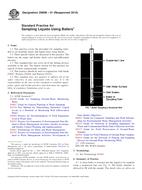
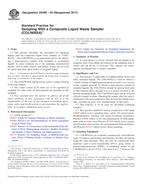 ASTM D5495-03(2011)..
ASTM D5495-03(2011)..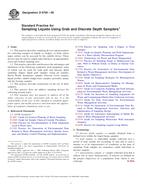 ASTM D6759-09
ASTM D6759-09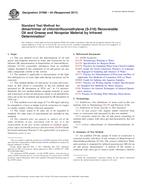 ASTM D7066-04(2011)..
ASTM D7066-04(2011)..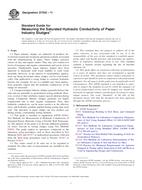 ASTM D7243-11
ASTM D7243-11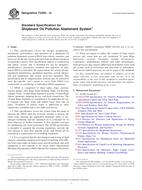 ASTM F2283-12
ASTM F2283-12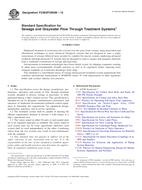 ASTM F2363/F2363M-12..
ASTM F2363/F2363M-12..
 Cookies
Cookies
